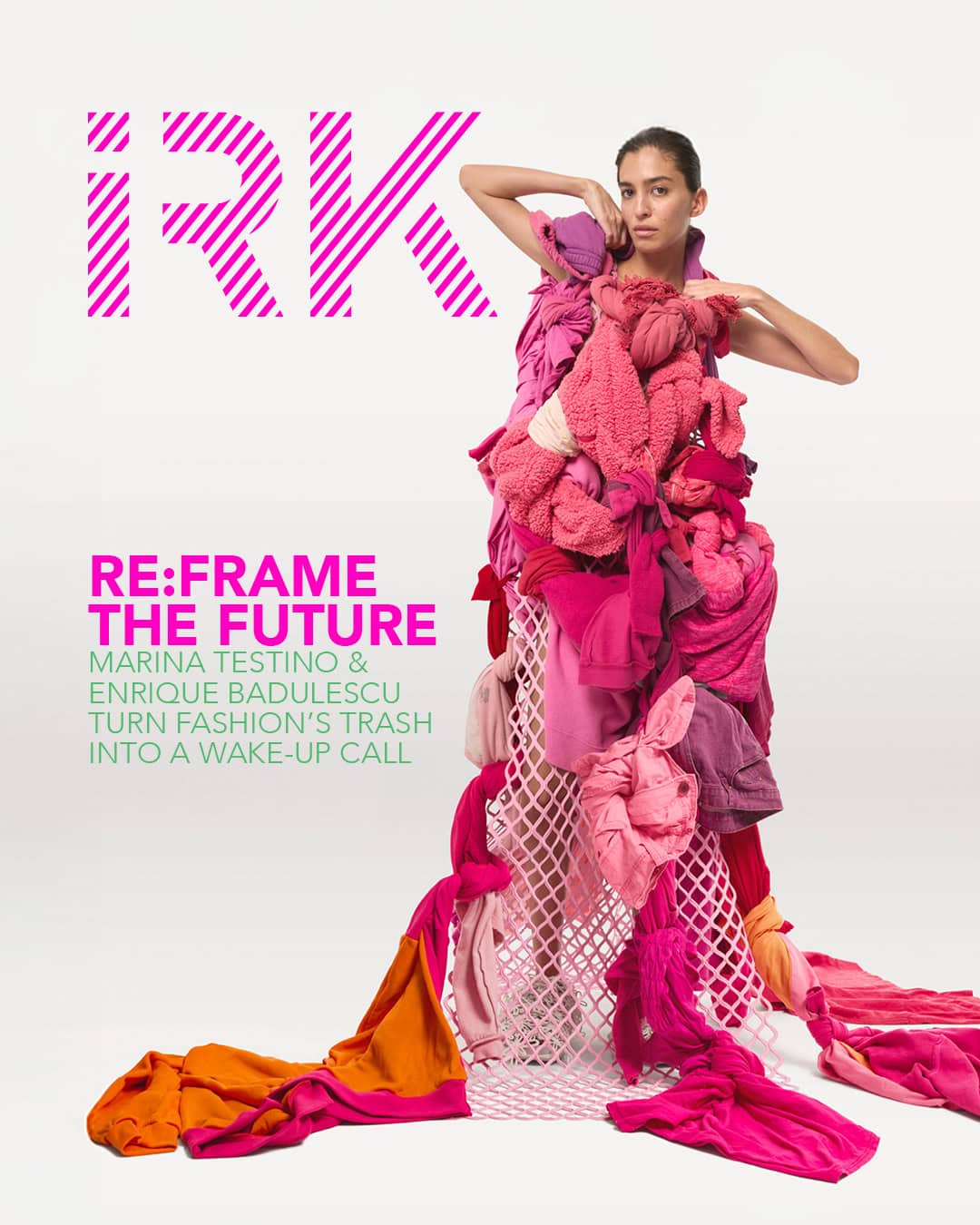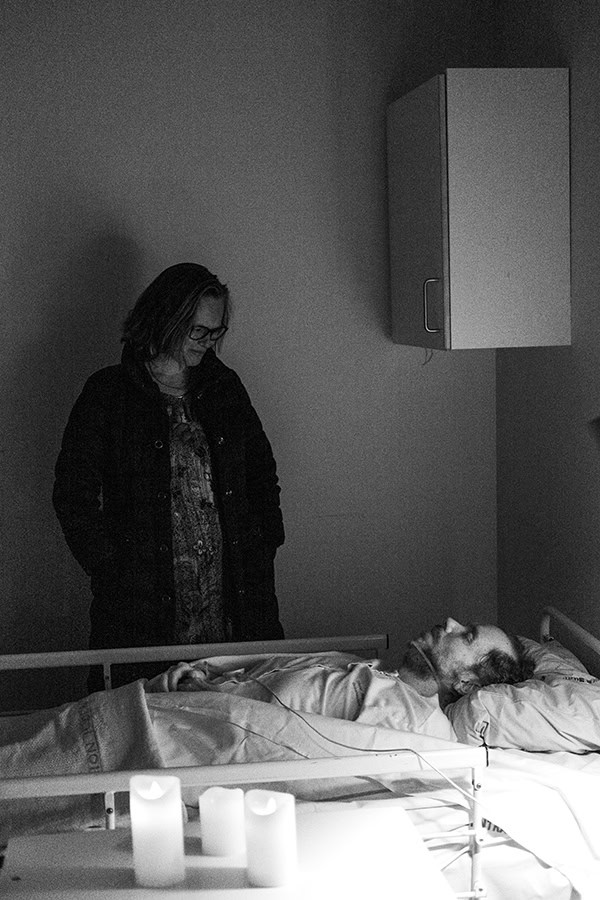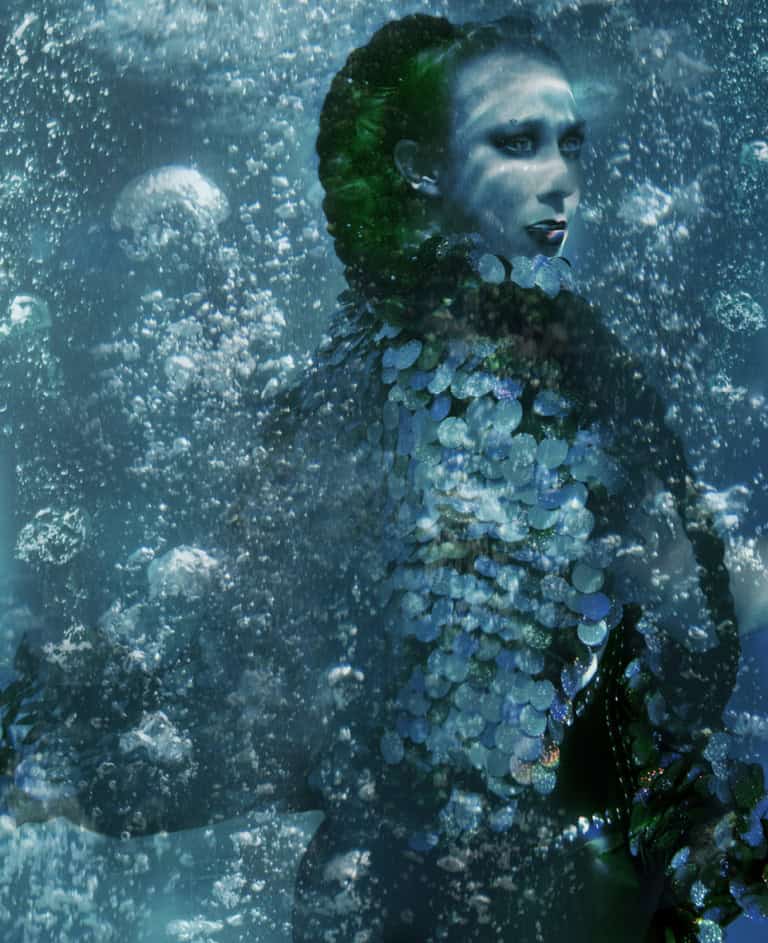
re:FRAME: Marina Testino’s Sustainable Fashion Exhibition
In partnership with Enrique Badulescu re:FRAME is a sustainable fashion exhibition that hurts and heals. It invites us to see fashion’s dirty secrets while imagining better futures.
Somewhere in Chile’s Atacama Desert—one of the driest places on Earth—there’s a mountain made entirely of clothes. Sequined party dresses, stretch denim, and polyester tank tops in every shade of neon. These aren’t garments awaiting their moment. They’ve been discarded by a system that thrives on speed and waste. And standing in front of them, fashion activist and artist Marina Testino found herself struck not by the visual chaos—but by the quiet.

What lingered for her, long after she left, wasn’t the color or scale. “What stayed with me was the silence,” she said. “This massive environmental crisis is happening, and yet so few people are talking about it.” It reminded her of the early days of her #WeSeaThrough campaign, when she first discovered the scope of microplastic pollution in fashion. Even people working in sustainability, she recalled, had little idea just how bad it was.
That impulse—to take the invisible and make it unforgettable—is what sparked her newest project: re:FRAME. The Earth Day exhibition, opening April 24 in New York City, is a collaborative work with legendary fashion photographer Enrique Badulescu. It reimagines fashion waste not as something to be hidden, but as something to be felt.
Where Fast Fashion Goes to Die
We rarely ask where our clothes go when we’re done with them. The answer, increasingly, is nowhere near us.
The fashion industry generates 92 million tons of textile waste each year, much of it unsold, unused, or worn once and tossed. A single garbage truck’s worth of clothing is burned or landfilled every second. Some of it ends up in places like Atacama, where the silence Testino experienced is disturbed only by the soft rustle of synthetic fabric in the desert wind.
What we’re seeing, Testino believes, is the cost of a system designed to distract. “The industry thrives on illusion—on curated beauty, not messy truths,” she said. “If people really saw where their clothes came from and where they ended up, they’d start asking harder questions.”
re:FRAME doesn’t aim to shock, but to draw people in—to create a kind of dissonant seduction. Together, Testino and Badulescu used vibrant color, bold composition, and a fashion editorial’s visual allure to depict textile waste as both beautiful and disturbing. “We wanted the viewer to feel something before they even processed what they were looking at,” she said. “Sustainability is often framed in such a dry, heavy way. I didn’t want to make people feel guilty. I wanted to make them feel—and then think.”
Art That Educates and Activates: A Sustainable Fashion Exhibition
The re:FRAME sustainable fashion exhibition goes beyond photographs. There are immersive installations, curated interventions, and an interactive activation created in partnership with The Climate Museum. The centerpiece: a spotlight on the Fashion Act, proposed legislation that would require large fashion brands to disclose environmental impacts, improve labor practices, and meet clear sustainability standards.
For Testino, this intersection of culture and policy is critical. “We need accountability, and that starts with legislation,” she said. “The Fashion Act is powerful because it makes responsibility measurable. Once there’s a standard, there’s no excuse.”
Yet re:FRAME isn’t a soapbox—it’s a space of collaboration. Testino curated the exhibition not just as an artist, but as a connector. “The sustainability space can feel so siloed,” she explained. “We need to bring all the players to the table—the scientists, the creatives, the brands, the NGOs, the investors. We need people who can fund, build, communicate, and imagine.”
A Collision of Color and Consciousness
Badulescu, known for photographing icons like David Bowie and Kate Moss, brings his signature vibrancy and high-fashion lens to the project. The two have known each other for years—he’s a longtime family friend—but this was their first creative collaboration. For Testino, the choice was intentional. “Enrique sees the world through light and color,” she said. “And for me, color has always been a tool. We both use it to shift perception, to make sustainability feel exciting and alive.”
This use of color isn’t just aesthetic—it’s strategic. Fashion’s appeal has always been about desire. And if we want to transform the system, Testino argues, we have to transform what people want. “Luxury isn’t about excess anymore—it’s about intention,” she said. “People are craving connection, meaning, and authenticity.”
The Truth Beneath the Buzzwords
It’s easy to dismiss sustainability as fashion’s favorite buzzword. Testino agrees—some of the language has lost meaning. “There’s real progress happening, but there’s also a lot of noise,” she said. The difference, she insists, is in the details. “If a brand’s ‘sustainability’ section says they use ‘eco materials’ but doesn’t name a single one—that’s a red flag.”
This is why she sees policy not as a constraint, but as essential scaffolding. “The Fashion Act gives us something we’ve never had in this space: clarity. A real standard.” That clarity, she believes, is what will separate transformation from greenwashing.
So What Does Fashion Look Like When It Loves Us Back?
According to Testino, it looks like clothes made to last, created by people paid fairly, using materials that regenerate rather than destroy. “It’s not about taking the joy out of fashion—it’s about building it with more care,” she said. “We don’t need to stop loving fashion. We just need to love it differently.”
If re:FRAME does its job, it won’t just expose what’s broken. It will offer something else: possibility. The possibility of a system that honors creativity without discarding the planet. The possibility of fashion that tells the truth—and still feels magical.
Because sometimes the most radical thing we can do is simply look, clearly and completely, at what we’ve chosen not to see.
re:FRAME Exhibition
April 25 – 27, 2025
Where: Leica Store & Gallery NYC 406 W 13th St, New York, NY 10014
The exhibition is free and open to the public.
For more sustainable fashion stories SKFK: Sustainable Brand from Spain
Team Credits:
Photographer: Enrique Badulescu; Fashion Director: Romina Herrera Malatesta; Model: Marina Testino;
Makeup Artist: Linda Gradin; Hair Stylist: Dennis Devoy; Set Designer: Caitlin Cowger; Retouching: Gloss
Studio NYC; Animation: Giorgia Ascolani; Installation Artist: Iacopo Capone-Doumas; Furniture Designer:
Blanca Codina; Fashion Installation: Natalia Robles Otezia.
Share this post
Patrick Duffy is the founder of Global Fashion Exchange, a company catalyzing positive impact through strategic consulting roadmaps focusing on supply chain transparency, worker rights, responsible production for B2B as well as consumer facing programming and community building focusing on aligning people or communities with the SDGs.
Experience developing networks and activating ideas, guiding creative teams globally, and working with institutions like the Victoria and Albert Museum and UNESCO, and iconic spaces such as Federation Square Melbourne, Madison Square Garden, Bryant Park in New York City, and The Dolby Theatre in Los Angeles.
Patrick has produced clothing swaps all over the world from, with GFX Active in over 100 countries. Each GFX event focuses on building community, education and transformational business models. Partnering with global brands, key stakeholders, and academia to help create awareness and positive impact through conscious consumption
Patrick harnesses the power of media to create positive social and environmental impact. Through storytelling, education, and advocacy, he raises awareness, inspires action, to catalyze change. By highlighting issues and solutions, Patrick creates strategic campaigns to engage audiences, influence attitudes and behaviors, and contribute to a more sustainable and just world. Additionally, Patrick is the Sustainability and Positive Impact Director of Paris based @IRKMagazine and Editor In Chief of @IRKLiving
Patrick has produced and co-curated events and marketing/PR campaigns for recognized brands across art, fashion, and tech spaces including @virginhotels @britishfashioncouncil @mspdid @moethennessy @microsoft @lagosfashionweekofficial @perutradenyc @fashionimpactfund @istitutomarangonidubai @peaceboatus @lisboafashionweek and more spanning 15 years and hundreds of events in 5 continents.
Read Next




